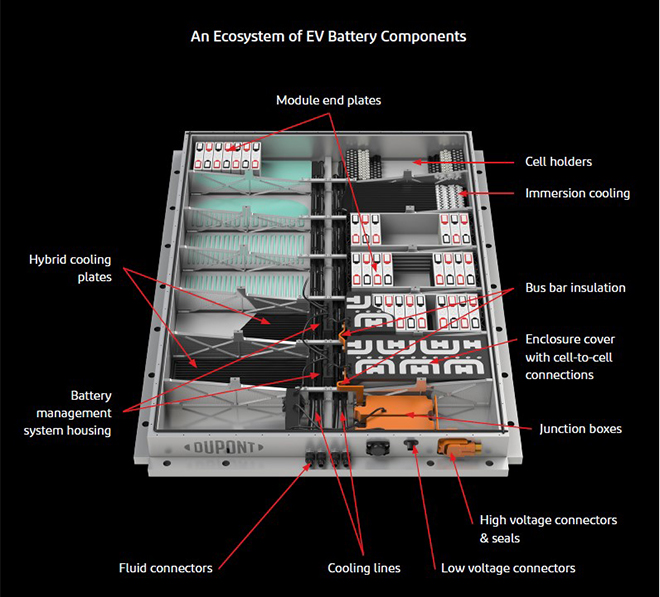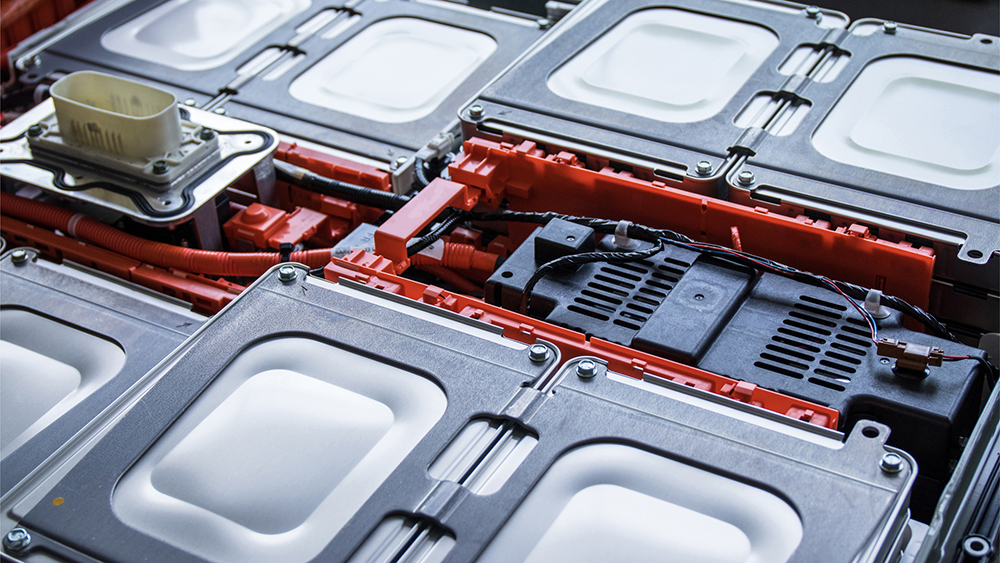Before this decade is over, even conservative estimates indicate that at least two out of three cars produced in the world will be electrically powered. This figure accounts for both fully battery-powered and hybrid propulsion system vehicles.
There are some hard truths involved in engineering mobility for the future. Systems, safety, and performance are more critical than they’ve ever been and perhaps even harder to juggle. Connectivity, ADAS, and autonomous systems bring the promise of future innovation while also adding layers of complexity.
The hard truth is that designs must be engineered for reliability, lower weight, and flawless operation, while still managing to sparkle on the showroom floor.
In this e-Book, engineers from Celanese Engineered Materials take a look at some of the key EV battery components and the materials that will drive top performance.

Challenges abound
Designing a new electric vehicle battery can be a daunting task. There are so many factors to consider, from the materials used to the electrical capacity, to the temperature management of the battery. What’s more, the battery needs to be able to withstand a lot of wear and tear. The number of times it can charge and discharge is important too.
There are numerous other factors to consider when building an EV, but here is a short list of critical needs.
Power and charging: Inherent performance factors such as energy density, capacity, runtime, and others ultimately determine how far any electrically powered vehicle can travel on a single charge. Consumers have exhibited so-called “range anxiety” given the small number of charging stations available outside the home.
Safety: Li-ion batteries have the highest energy density and thus, the longest range. But they are temperature sensitive and prone to thermal runaway if overcharged or cooled insufficiently, so managing temperature is crucial.
Ability to withstand environmental conditions: Battery lifetime and range are affected by weather conditions such as rain, snow, road salt, heat, and road debris. Vehicle design and battery management systems play their parts in warding off these effects.
Cost: Batteries are the highest cost component in any type of EV – hybrid (HEV), battery (BEV), or plug-in hybrid (PHEV). This fact is the main reason EVs are still not priced comparably to ICEs (internal combustion engines).
Solving for the future of e-mobility
While there are many types of batteries on the market today, each with its own set of benefits and drawbacks, it’s essential to know which materials are best suited for your design.
If you’re an automotive design engineer who wants to learn how to make a more durable, faster-charging, and lighter-weight battery with advanced polymers, you’ll find answers in our e-book. It introduces the world of advanced polymers and their applications in automotive battery components. And it will help you understand how these materials work and why they make a difference in performance.
Get the e-book here: https://email.mobility.dupont.com/EV-battery-ebook?src=mm_global_dig-content-spons_electric-vehicle-22_charged_battery-module-sponsor-ad-na_11.10.22
Note: As of November 1, 2022, Celanese has expanded its Engineered Materials business with the acquisition of the Mobility and Materials (M&M) division of DuPont. For additional information, please visit mobility-materials.com/

cheap lasuna generic – buy diarex sale himcolin price
purchase probenecid generic – etodolac canada carbamazepine 200mg tablet
buy celecoxib 100mg online – order urispas buy indomethacin 75mg
brand voltaren 100mg – cambia buy online aspirin cost
rumalaya medication – purchase rumalaya online buy elavil 10mg pills
purchase diclofenac for sale – diclofenac tablets nimotop pills
buy baclofen paypal – baclofen 10mg generic order piroxicam online cheap
buy trihexyphenidyl medication – order generic trihexyphenidyl diclofenac gel order online
order cefdinir sale – where to buy clindamycin without a prescription purchase cleocin generic
order prednisone 40mg for sale – prednisone 10mg tablet purchase elimite generic
acticin online buy – buy generic acticin cheap tretinoin
buy betnovate generic – adapalene usa monobenzone online order
buy generic metronidazole over the counter – flagyl online buy order cenforce 100mg pills
amoxiclav cost – cheap synthroid tablets buy levothyroxine sale
brand cleocin – clindamycin for sale indocin 50mg drug
where to buy hyzaar without a prescription – cephalexin brand keflex drug
eurax drug – order mupirocin cream purchase aczone gel
provigil order online – purchase phenergan sale pill meloset
zyban 150 mg oral – shuddha guggulu usa shuddha guggulu order online
buy xeloda 500mg online – buy generic mefenamic acid online order danocrine 100mg online cheap
order fosamax 70mg without prescription – medroxyprogesterone canada buy generic provera for sale
buy norethindrone 5mg generic – aygestin 5mg usa yasmin online order
purchase estradiol pill – order ginette 35 for sale cheap anastrozole 1 mg
dostinex 0.25mg cost – order premarin for sale alesse order
гѓ—гѓ¬гѓ‰гѓ‹гѓі еЂ‹дєєијёе…Ґ гЃЉгЃ™гЃ™г‚Ѓ – жЈи¦Џе“Ѓгѓ‰г‚г‚·г‚µг‚¤г‚ЇгѓЄгѓійЊ гЃ®жЈгЃ—い処方 イソトレチノイン е‰ЇдЅњз”Ё
eriacta hurt – apcalis close forzest moonlight
valif online balloon – valif online frequent buy cheap generic sinemet
provigil oral – cefadroxil 250mg cost buy epivir paypal
purchase promethazine generic – ciprofloxacin 500 mg tablet order lincomycin 500 mg